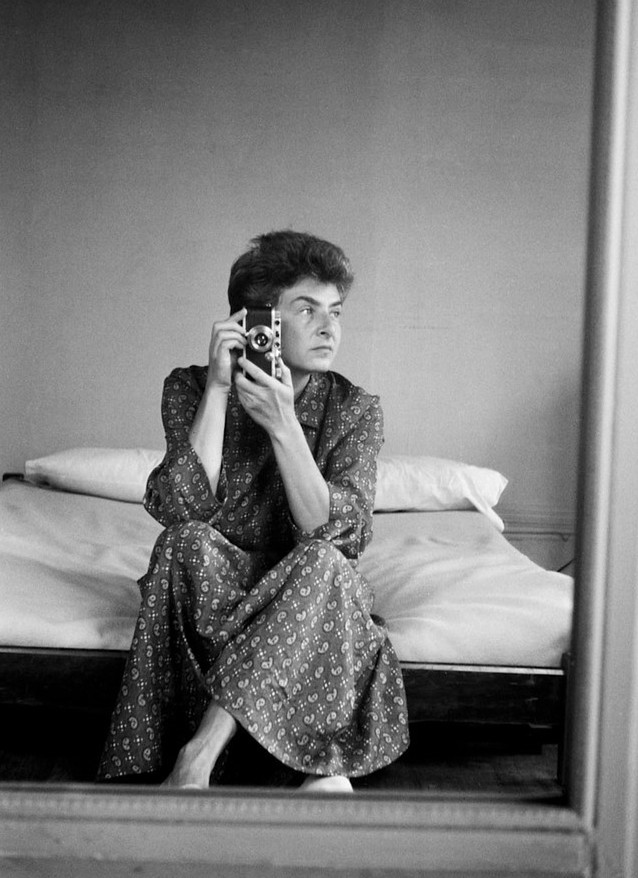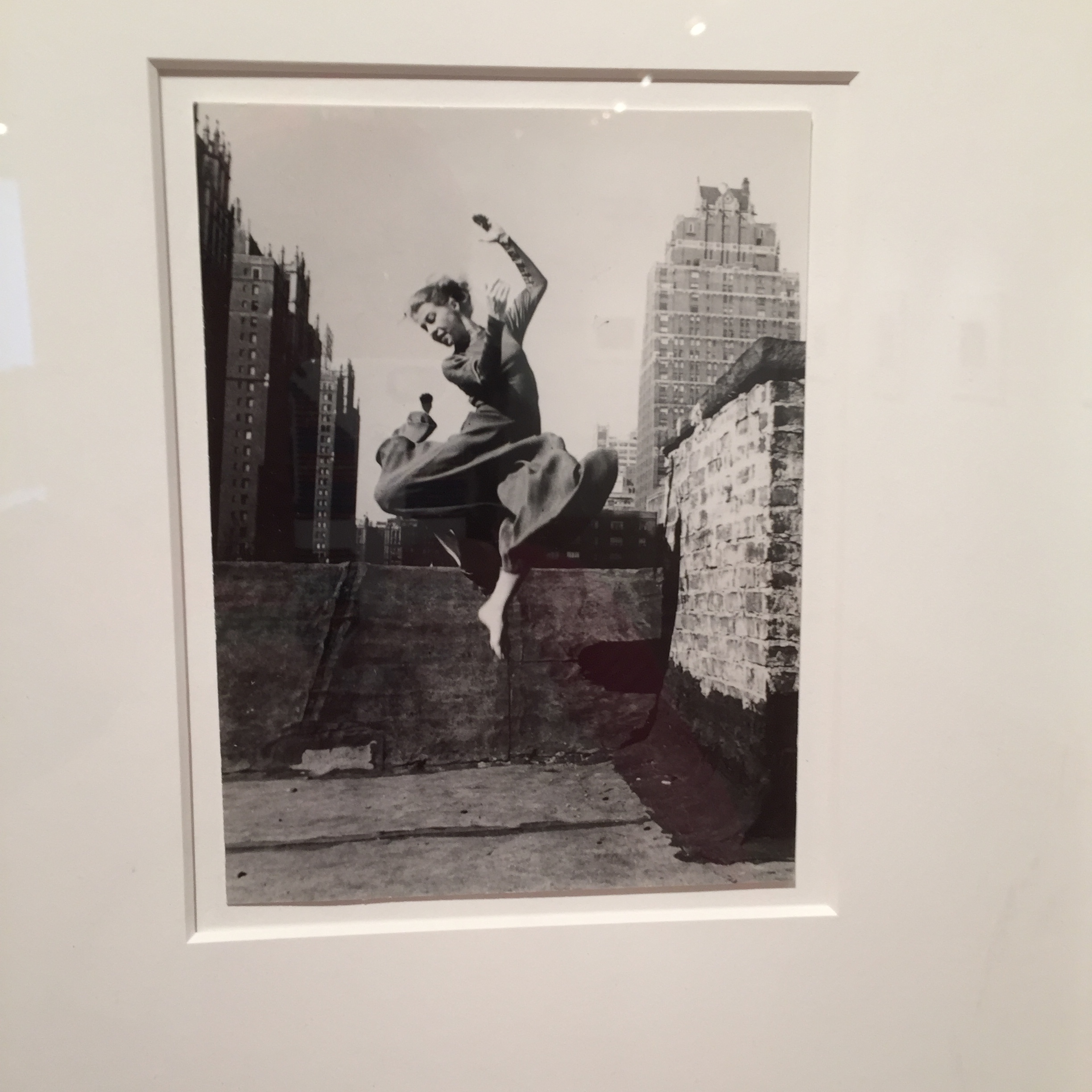Archive
Ellen Auerbach
- Ellen
- Auerbach
Ellen Margarete Rosenberg
- 20-05-1906
- Karlsruhe (DE)
- 30-07-2004
- New York City (US)
- Photographer
When she arrived in New York in 1937, the German-born photographer Ellen Auerbach (formerly Rosenberg) had already passed through exile stations in Palestine and Great Britain.
Word Count: 25

Ellen Auerbach, Selbstportrait, cropped detail (Ellen Auerbach auf einer Liege sitzend, sich selbst im Spiegel fotografierend), New York 1950 (©Akademie der Künste, Berlin / VG Bild-Kunst, Bonn 2021). 
Ellen Auerbach, Selbstportrait. (Ellen Auerbach auf einer Liege sitzend, sich selbst im Spiegel fotografierend), New York 1950 (©Akademie der Künste, Berlin / VG Bild-Kunst, Bonn 2021). 
Cover of Life magazine, with image Two Years Old by Ellen Auerbach, Life, 28 November 1938 (Photo: Helene Roth). 
The dancer Renate Schottelius photographed by Ellen Auerbach ( "Ellen Auerbach - Robert Mann Gallery" by Erika_Herzog is licensed under CC BY 2.0). "all die Neuanfänge ..." Photographien aus der Kunstsammlung der Akademie der Künste, edited Hannelore Fischer, exh. cat. Käthe-Kollwitz-Museum Köln, Köln 2008.
Displaced Visions. Émigré Photographers of the 20th Century, edited by Nissan N. Perez, exh. cat. The Israel Museum, Jerusalem, 2013.
Ellen Auerbach. Berlin - Tel Aviv - London – New York, edited by Susanna Baumann, Ute Eskilsden, exh. cat. Akademie der Künste Berlin, Berlin 1998.
Gilbert, George. The Illustrated Worldwide Who’s Who of Jews in Photography. G. Gilbert, 1996.
Graeve Ingelmann, Inka. Ellen Auerbach. Das dritte Auge. Leben und Werk. Schirmer/ Mosel, 2006.
Otto, Elizabeth. "ringl + pit and the Queer Art of Failure." OCTOBER 173, Summer 2020, pp. 37–64.
Schaber, Irme. “Fotografie.” Handbuch der deutschsprachigen Emigration 1933–1945, edited by Claus-Dieter Krohn and Patrick von zur Mühlen, WBG, 1998, pp. 970–983.
Verborgene Spuren. Jüdische Künstler*innen und Architekt*innen in Karlsruhe 1900-1950, exh. cat. Städtische Galerie Karlsruhe, Karlsruhe 2021.
Word Count: 146
Palestine, Israel (1933-1936); London, GB (1936/37); New York City, US (1937/1938); Philadelphia, US (1938-1943); New York City, US (1943-2004).
Hotel Latham, 4 East 28th Street, Nomad, New York City (residence, April 1937); 211 Clermont Street, Brooklyn, New York City (residence, summer 1937); New 2nd Street, Elkins Park, Philadelphia (residence and workplace, autumn 1937-1943); 116 West 21st Street, Chelsea, New York City (residence and workplace, 1943–1946); 500 East 11th, East Village, New York City (residence and workplace, 1946–1951); 338 East 39th Street, Murray Hill, New York City (residence and workplace, 1951-1953); 321 East 85th Street, Yorkville, New York City (1953-2004).
- New York
- Helene Roth. "Ellen Auerbach." METROMOD Archive, 2021, https://archive.metromod.net/viewer.p/69/2948/object/5138-10770030, last modified: 31-08-2022.
-
Erika StonePhotographerNew York
Erika Stone is a German émigré, who moved to New York with her parents and sister in December 1936, at the age of 12. She went on to carve out a career as photographer.
Word Count: 32
Fred SteinPhotographerLawyerNew YorkAlways accompanied by his camera, the German émigré photographer Fred Stein discovered New York City during the 1940s and 1950s. His pictures provide an human and multifaceted view of the metropolis.
Word Count: 31
Charles LeirensPhotographerMusicianMusicologistNew YorkCharles Leirens was a Belgian-born musician and photographer who emigrated to New York in 1941. While publishing two books on Belgian music, he also gave courses in musicology and photography at the New School for Social Research.
Word Count: 36
Rolf TietgensPhotographerEditorWriterNew YorkRolf Tietgens was a German émigré photographer who arrived in New York in 1938. Although, in the course of his photographic career, his artistic and surrealist images were published and shown at exhibitions, his work, today, is very little known.
Word Count: 39
Marion PalfiPhotographerNew YorkMarion Palfi was a German émigré photographer who lived in New York from the 1940s to the 1960s. Her photographic engagement in social and political topics made her name for her use of the camera to draw attention to social injustices.
Word Count: 41
Tim GidalPhotographerPublisherArt HistorianNew YorkTim Gidal was a German-Jewish photographer, publisher and art historian emigrating in 1948 emigrated to New York. Besides his teaching career, he worked as a photojournalist and, along with his wife Sonia Gidal, published youth books.
Word Count: 35
Lilo HessPhotographerNew YorkThe German émigré Lilo Hess was an animal photographer working for the Museum for Natural History and the Bronx Zoo, as well being a freelance photographer and publisher of children's books.
Word Count: 31
Lilly JossPhotographerNew YorkLilly Joss was an émigré freelance photographer in New York. She worked for the Black Star photo agency and magazines and was also a portrait and theatre photographer.
Word Count: 28
Ruth StaudingerPhotographerCinematographerArt dealerNew YorkVery few and only fragmentary details can be found on the German émigré photographer Ruth Staudinger, who emigrated in the mid-1930s to New York City. Her nomadic life was also characterisedd by several changes of name along the way.
Word Count: 40
Rudy BurckhardtPhotographerFilmmakerPainterNew YorkRudy Burckhardt was a Swiss-born photographer, filmmaker and painter who emigrated from Basle to New York City in 1935. He was well networked within the emerging Abstract Expressionist art scene of 1940s' and 50s'.
Word Count: 33
T. Lux FeiningerPhotographerPainterNew YorkLux T. Feininger was a German-American émigré photographer and painter and the brother of the photographer Andreas Feininger, arriving in 1936 in New York. Although he started taking photographs during the 1920s in Germany, Feininger is better known for his career as a painter and his photographic work is largely unacknowledged.
Word Count: 50
Trude FleischmannPhotographerNew YorkTrude Fleischmann was an Austrian-Jewish portrait and dance photographer who emigrated in 1939 to New York, where she opened a studio in Midtown Manhattan with the photographer Frank Elmer.
Word Count: 28
Henry RoxPhotographerSculptorNew YorkHenry Rox was a German émigré sculptor and photographer who, in 1938, arrived in New York with his wife, the journalist and art historian Lotte Rox (née Charlotte Fleck), after an initial exile in London. Besides his work as a sculptor, he began creating humorous anthropomorphised fruit and vegetable photographs.
Word Count: 50
Photo-RepresentativesPhoto AgencyNew YorkPhoto-Representatives was a photo agency founded by the photographers Erika Stone and Anita Beer in 1953.
Word Count: 15
Service Photo Suppliers Inc.Photo SupplierNew YorkService Photo Suppliers was a photo supplier distributing a wide variety of photo equipment and opened by the German émigré Hans Salomon (1909–?) in 1945.
Word Count: 23
Edith Tudor-HartPhotographerLondonThe Viennese photographer Edith Tudor-Hart emigrated to England in 1933 and made a name with her photographs focusing on questions of class, social exclusion and the lives of marginalised people.
Word Count: 29
László Moholy-NagyPhotographerGraphic DesignerPainterSculptorLondonLászló Moholy-Nagy emigrated to London in 1935, where he worked in close contact with the local avantgarde and was commissioned for window display decoration, photo books, advertising and film work.
Word Count: 30
Horacio CoppolaFilmmakerPhotographerBuenos AiresBorn in Buenos Aires, Horacio Coppola is one of the photographers who represent modern photography in Argentina.
Word Count: 17
Lotte JacobiPhotographerNew YorkIn October 1935 the German émigré photographer Lotte Jacobi, together with her sister Ruth Jacobi, opened a photo studio on 57th Street. The two sisters had to leave their parents' photo studio in Berlin in the 1930s and emigrated to New York.
Word Count: 41
Gerda PeterichPhotographerNew YorkThe German émigré Gerda Peterich had a photographic studio at 332 West 56th Street and in New York, where she specialised in dance and portraiture. In addition, she visited dance studios and photographed outside in the city.
Word Count: 36
Grete SternPhotographerBuenos AiresGrete Stern is one of the photographers that represent modern photography in Argentina. Her house in Ramos Mejía was a meeting place for local and foreign artists and intellectuals.
Word Count: 30
Gerty SimonPhotographerLondonThe Berlin photographer Gerty Simon established a studio in Chelsea, London. Her solo exhibition Camera Portraits from 1935 featured a distinctive portrait of the émigré art dealer Alfred Flechtheim (shown above).
Word Count: 30
Wolf SuschitzkyPhotographerCinematographerLondonThe Viennese Wolf Suschitzky made a career as a photographer and cinematographer after emigrating to London in 1935.
Word Count: 17
Bertolt BrechtPhotographLondonGrete Stern practised as a commercial and portrait photographer in her London exile and took portraits of emigrants such as Bertolt Brecht, Helene Weigel, Karl Korsch and Paula Heimann.
Word Count: 29